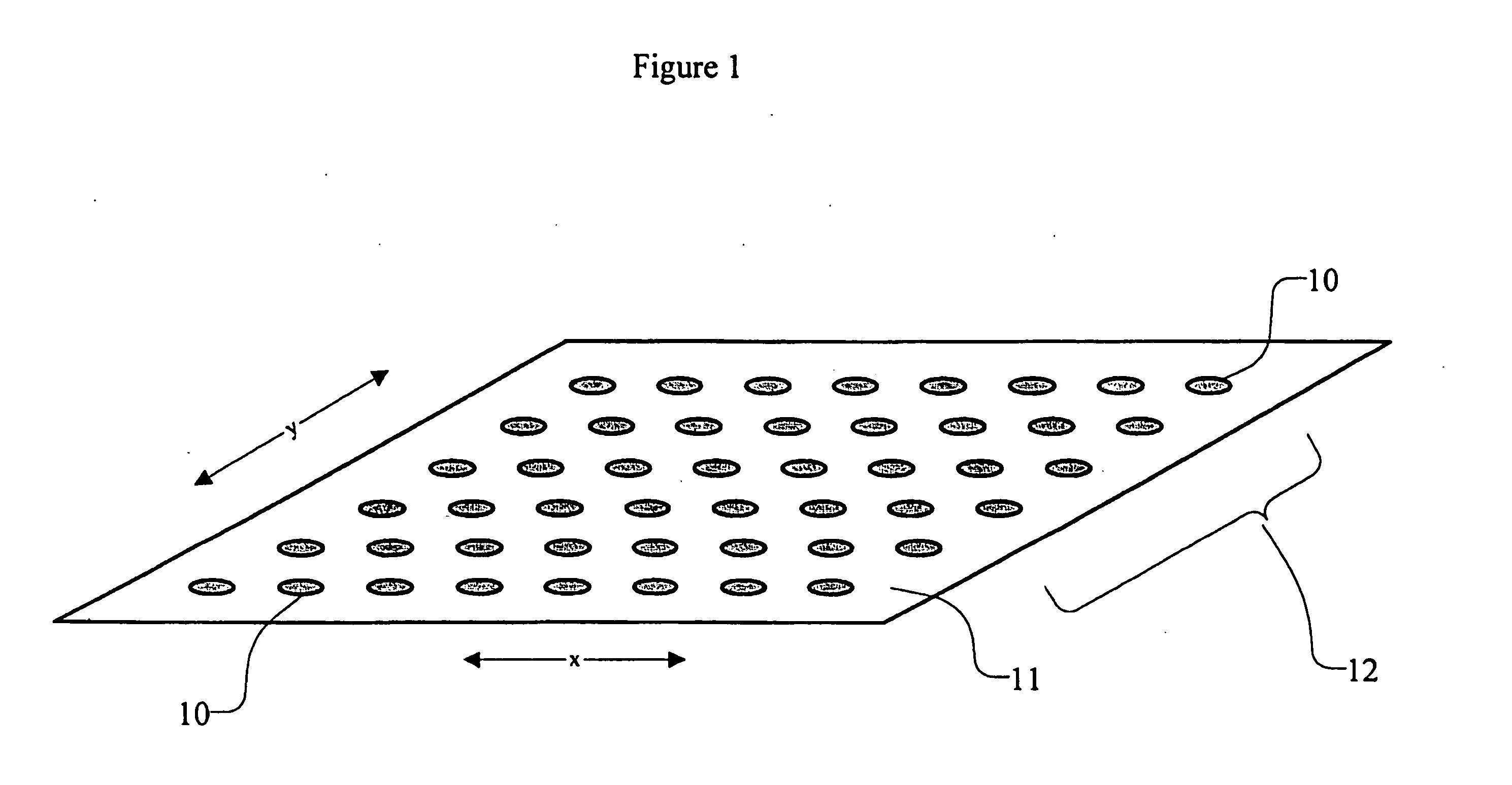High density sequence detection methods and apparatus
a sequence detection and high density technology, applied in biochemistry apparatus and processes, laboratory glassware, fluid controllers, etc., can solve problems such as the inability to perform such analyses on a commercial scale, the difficulty of tasks, and the introduction of new analytical and diagnostic tools, so as to achieve the effect of reducing cross contamination
- Summary
- Abstract
- Description
- Claims
- Application Information
AI Technical Summary
Benefits of technology
Problems solved by technology
Method used
Image
Examples
example 2
[0141] A microplate is made according to this invention, by applying discrete spots of agarose onto a polycarbonate plastic substrate. A solution is made comprising 3% (by weight) of agarose having a melt point ≦65° C., supplied as NuSieve GTG, by FMC BioProducts (Rocland, Me., USA). The solution is then spotted onto the surface of the substrate in an array comprising 15,000 reaction spots. The microplate is then used in a method according to Example 1. In this method, High Resolution blend Agarose 3:1, and Monoclonal anti-biotin-agarose, supplied by Sigma (St. Louis, Mo., USA) are substituted for the low melt agarose, with substantially similar results. In some embodiments, biotinylated primers and probes are used.
example 3
[0142] A microplate is made according to this invention, by cutting an optical adhesive cover, P / N 4311971, supplied by Applied Biosystems Inc. (Foster City, Calif., USA) to the size of a standard glass slide, and pasting the cover to the slide. Heat and pressure is applied while smoothing the cover over the glass surface in order to expel air bubbles between the cover and glass surface. 2 uL droplets of 1% low melting agarose are delivered onto the plastic surface at a 450 μm pitch in a matrix and dried at low heat on a hot plate. The plastic surface is rinsed with deionized water. A matrix of water droplets is retained on the plastic surface when the excess of water was removed. 2 uL of RNase P TaqMan® reaction mix, supplied by Applied Biosystems, Inc. (Foster City, Calif., USA) with human genomic DNA is then added onto each spot and covered with mineral oil. Thermal cycling and fluorescence detection are then carried out using a PCR instrument that is compatible with glass slides...
PUM
| Property | Measurement | Unit |
|---|---|---|
| Length | aaaaa | aaaaa |
| Length | aaaaa | aaaaa |
| Volume | aaaaa | aaaaa |
Abstract
Description
Claims
Application Information
 Login to View More
Login to View More - R&D
- Intellectual Property
- Life Sciences
- Materials
- Tech Scout
- Unparalleled Data Quality
- Higher Quality Content
- 60% Fewer Hallucinations
Browse by: Latest US Patents, China's latest patents, Technical Efficacy Thesaurus, Application Domain, Technology Topic, Popular Technical Reports.
© 2025 PatSnap. All rights reserved.Legal|Privacy policy|Modern Slavery Act Transparency Statement|Sitemap|About US| Contact US: help@patsnap.com



